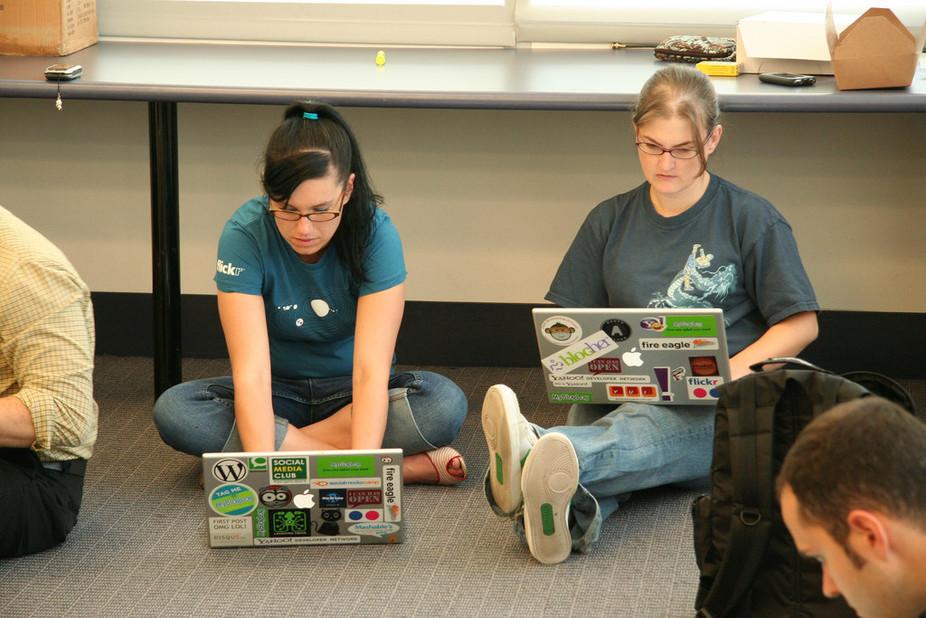
It’s little wonder the Turnbull government’s innovation mantra has fallen flat. It’s pushing strategic tax breaks and incentives aimed to increase the appetite for risk as a means to innovation, when true innovation culture is actually about managing and minimising risks.
This is a key tenet of the new innovation culture that is emerging in the design and startup industries. Australian leaders are behind the ball on this culture, in many cases running hard to catch up.
Australian innovators and entrepreneurs have been complaining about the state of the national innovation culture for years, with good cause. According to the 2015 Australian Innovation Systems Report, only 16% of Australian businesses have a high performing innovation culture, compared with 44% of the global top 100. In addition to this, 39% of Australian businesses have little or no innovation culture at all.
Australian startup companies make up the bulk of the high performing 16%. These companies are defining a new innovation culture that is fast, collaborative, and committed to minimising risk.
Corporate Australia is eager to embrace the startup way. But companies need to understand the rules have changed.
"In 2016, innovation means entrepreneurship,
self-organising teams, fast ideas,
and cheap, customer experiments."
Fifteen years ago, a company was considered innovative if the CEO and board mandated a steady flow of new product ideas through the company’s innovation pipeline. Innovation was a carefully planned process, driven from above, and tied to key strategic goals.
In 2016, innovation means entrepreneurship, self-organising teams, fast ideas, and cheap, customer experiments. This is a completely different concept and practice of innovation.
What has driven this change? The answer is complex, but it centrally concerns the rapid ascent of a suite of methods that have changed the nature of work in the design and tech startup worlds. These methods enable innovators and entrepreneurs to develop new products and services fast, at minimal cost, and limited risk. They are: agile software development, design thinking, and lean startup method.
Agile software development was born in 2001. Agile developers work in self-organising teams to build working software in short, iterated sprints. They oppose planning-intensive “waterfall” approaches because these lead to budget blowouts and software no one wants. Instead they build software in close collaboration with customers and users. This reflects a hacker approach to software development: build, test, learn, and iterate.
Hacker mindsets and practices fed into the design world from 2004, when IDEO founder David Kelly launched the dschool, at Stanford University. The dschool established “design thinking” as core curriculum for the Silicon Valley design industry.
IDEO’s version of design thinking marries an anthropological inquiry into habitual user behaviour with the hacker-style approach of agile development. Students at the dschool learn how to work in self-organising teams to quickly prototype and create innovative products and services that address customers' needs.
Since Eric Ries published The Lean Startup in 2011, self-organisation and rapid prototyping for learning have become instrumental features of the startup industry. Ries built on Steve Blank’s Customer Development Methodology, a process for validating business model hypotheses, augmenting it with the idea of a “lean feedback loop,” a cycle of experiments that helps entrepreneurs identify a business model fast.
In today’s startup world, knocking together a prototype and testing it with customers is how people get a business off the ground. Spreets, the Australian group buying website, used lean startup method to go from concept to launch in the space of a month. Spreets was purchased by Yahoo7 for A$40 million nine months later.
"Increasing the effectiveness of entrepreneurial ventures
can be achieved by teaching people to prototype
innovations, and fail and learn fast."
Through self-organisation and rapid prototyping, startup companies are able to innovate faster and cheaper than traditionally structured companies, minimising costs and commercial risks.
If the government is genuinely committed to fostering a homegrown innovation culture, it should invest in educating entrepreneurs and business leaders in this new innovation culture. Tax breaks are ultimately a poor mechanism for fostering an innovation culture. They may entice entrepreneurs to take risks, but they don’t encourage them to actively mitigate risk through customer experiments.
In addition to reducing the costs of entrepreneurship, good innovation policy should contribute to increasing the effectiveness of entrepreneurial ventures. This can be achieved by teaching people to prototype innovations, and fail and learn fast.
This article was originally published on The Conversation. Read the original article.![]()

